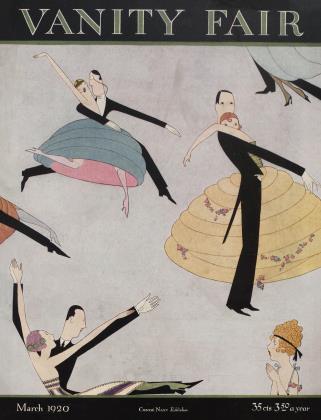Sign In to Your Account
Subscribers have complete access to the archive.
Sign In Not a Subscriber?Join NowAmong the English Cars
Glimpses at Some of the Latest Body and Chassis Styles Across the Atlantic
GERALD BISS
IN view of the enormous attendance at the revival of the British Motor Show at Olympia and the definite decision of the British Society of Motor Manufacturers and Traders to hold two distinct passenger car shows in succeeding weeks next winter, it is safe to say that the British public's interest in motor cars is at a remarkably high level. In fact, this interest might be likened to an Armenian refugee's interest in food. The British public is literally starved for motor cars. Even now, more than a year after the war, it is impossible to obtain deliveries of any popular make and there seems to be no relief in sight for long months to come, on account of the impossibility of the manufacturers to overcome the handicap imposed upon them by the labour disturbances in the various trades upon which the motor car industry is dependent.
However, the designers of new bodies are exceedingly busy and it is certain, when cars are again beginning to be made in large quantities, we shall see some very unusual ideas expressed in the new models. Needless to say, all these strikes and delays have not only completely disorganized the industry, but they have also succeeded in sending prices upward to an amazing degree.
Such is the demand on the part of the public for cars, that some of the more prominent factories have already sold their entire output for more than a year to come.
I understand that, in your country, there are two distinct schools of automobile design, one devoted to conservative retention of old carriage building-ideas and the other constantly seeking for originality both in appearance and mechanical features. This is also true, to some extent, in England. One of the developments of the moment is the adoption of airplane ideas and metallurgy in certain of the newly designed models, notably the Napier, the Straker-Squire and the Armstrong Whitworth among the larger cars and the Enfield-Allday, the Cosmos and one of two others among the newcomers in the smaller class. Such conservative leaders as the Rolls-Royce, the Lanchester and the Daimler are contenting themselves with minor improvements incorporated into their pre-war designs, as is the case with a great majority of the lesser makes. A number of firms in the latter class have plans for radical new designs which they have not yet been able to bring out.
There is no more talked-of car just now, with the possible exception of the Armstrong-Siddeley, than the new eight-cylinder Talbot-Darracq, a beautiful piece of work, although it must be admitted it strongly resembles the first American eight-cylinder car to come to England, even to the dropping of the magneto.
One of the outstanding features of the great -majority of new cars, big and small, is that electric starters and lighting sets are fitted as standard equipment. A year before the war hardly any British car was so equipped.
 View Full Issue
View Full Issue












Subscribers have complete access to the archive.
Sign In Not a Subscriber?Join Now